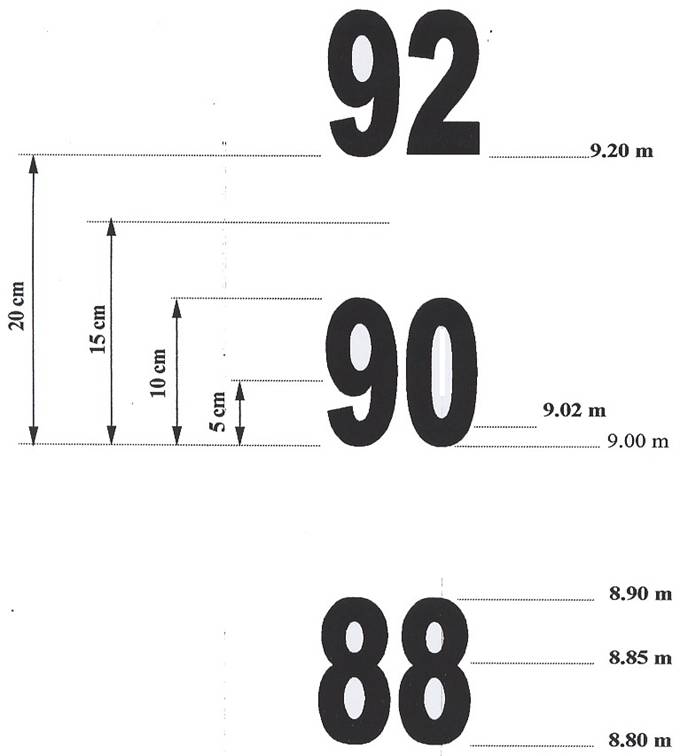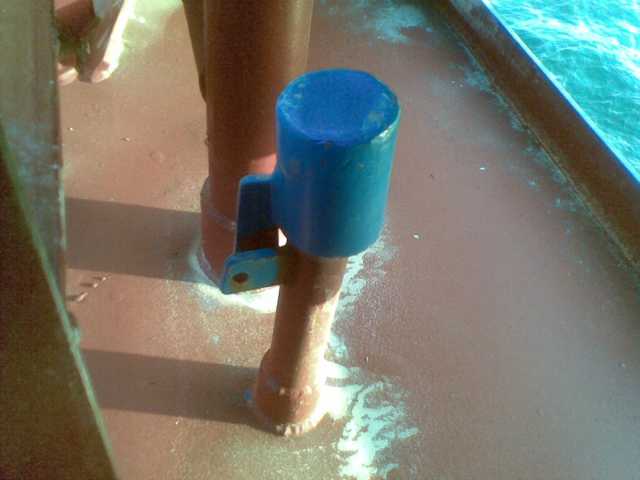How to Conduct a Draught Survey ?
When a a cargo ship loading or discharging her cargo, a marine surveyor should be attend on board the vessel to determined a total quantity loaded or total quantity on board prior discharging, to know total quantity on board the vessel using a Draught Survey or Draft Survey.
Please see blow for more details all about Draught Survey or Draft Survey procedures and calculation if you interest as follows;
Draft Survey: Procedures and Calculation
The Draft Survey procedures and calculation ascertained as the following series :
- Reading the draftmark of the ship, which consist of six (6) points of draftmarks, i.e.; Fore, Midship, and After at both sides of the ship,
- Sampling and testing the sea water or dock water density at the place where the vessel floats,
- Determining of deductible weights by measuring and sounding of ballast tanks, fuel oil, fresh water that existing onboard at the time of survey,
- Using Hydrostatic Table provided onboard to calculation.
Reading the Draftmark of the ship
Commonly, all ship are designed with draftmark for working with Draft
Survey to determined their actual weight. The draftmark could be find at
six (6) points on the below places:
- Forward Port Side (FP),
- Forward Starboard Side (FS),
- Midship Port Side (MP),
- Midship Starboard Side (MS),
- Aftward Port Side (AP),
- Aftward Starboard Side (AS),
View the Draftmark:
Use the small boat to go around the ship and get as near as possible to
the draft mark for best viewing. The surveyor should be read all above
marks clearly, because reading the draftmark is the first and most
essential process. I am not saying that other processses is not
essensial, but this process is hard to do and involves many rules of
conduct to gain the correctness and accuracy of Draft Survey
itself (I will post it later). The draftmark read is recorded on the
surveyor notebook, do not try to remember it or write down in your palm
hand. Its useless and un-professional.
Sampling and testing the sea water or dock water density
After reading the draftmark, directly engage with the sampling of sea
water or river water around the ship’s dock. Why? Because the ship
draft will not be the same at different water densities (at the lower
density means the ship more sink and at the higher density means the
ship more float). Where as the water density is subject
to changes which follow with water tide that carrying different water
salinity and temperature on to the ship dock. The sea water density
is indeed at density 1.025 and the fresh water at density 1.000. To
determine the density of water, we need the instrument named Hydrometer
or Density Meter. Inserted the Hygrometer on to the water sample on the
Sampling Can or Tube, then we could check the scale pointed on the
surface of the sampling water. Records the water dock density as survey
data.
Determining of deductible weights by measuring and sounding
Deductible Weight could measure by sounding the tanks which used the
Sounding Tape or gauging the tank level by visual inspection. Any
deductible weight such as Ballast Water, Fresh Water, Fuel and Diesel
Oil, and Bilges is notify to check. Records all in the survey book
includes with the density for Ballast and Bilges, and for Oil complete
it with density and temperature . The Fresh Water was at density 1.000.
View the Sounding Pipe:
Using Hydrostatic Table provided onboard to begin calculation,
I think all necessary data was completed, so we could do
calculation. The calculation is uses Displacement Table or usually
called Hydrostatic Table. This table is included all data that we need
to complete the calculation.
- Raw Draft Calculation; Fore Mean or Fm = (FP+FS)/2, Mid Mean or Mm = (MP+MS)/2, and Fore Mean or Am = (AP+AS)/2. while Apparent Trim or AT = Am – Fm. the Apparent Trim is the Trim that visually find.
- Draftmark posision and correction to perpendicular. As the ship draftmark is not placed at the perpendicular, the Fore and After draft should be corrected with distance from the draftmark to perpendicular. The correction rules is: if the Trim by Stern, the Fore correction should be minus and After correction plus, and if the Trim by Head (stem), the Fore correction should be plus and After correction minus. The Midship correction is parallel with the fore correction with the same pattern. Some Hydrostatic table provided with these correction result. But if not the reference pattern is for Fore Correction or Fc = (Fd x AT) : LBM and After Correction or Ac = (Ad x AT) / LBM. Where Fd = Fore distance to perpendicular, Ad = After distance to perpendicular, and LBM = Length Between Mark or Length between Fore and After draftmarks or LBM = LBP – (Fd + Ad).
- True Draft Calculation / Draft Corrected; Fore draft corrected or Fcd = Fm + Fc, Mid draft corrected or Mcd = Mm + Mc, and After draft corrected or Acd = Am + Ac.
- True Trim or TT : Actual Ship Trim after draft corrected or TT = Acd – Fcd.
- Fore and After Mean Draft or FAm = (Fcd + Acd)/2, Mean of Mean Draft or MM = (FAm + Mcd)/2, and Mean of Mean of Mean Draft or MMM or Quarter Mean = (MM + Mcd)/2.
- The above calculation is similar with : MMM = {(Fcd x 1) + (Acd x 1) + (Mcd x 6)}/8.
- Coresponding to the MMM or Quarter Mean result, the surveyor could check the value of needed parameters on Hysdrostatic table like; Displacement, TPC, LCF, and MTC. Records them accurately.
- Get the Displacement or Disp.
- First Trim Correction or FTc = (TT x LCF x TPC x 100) / LBP. Could be plus or minus depend on LCF.
- Second Trim Correction STc = (TT x TT x MTC x 50) / LBP. The result always plus (+).
- Displacement corrected by Trim or DispT = D – (FTc + STc).
- Density Correction or Denc = DispT x {(Aden – 1.025) / 1.025}. where the Aden is Actual Density that surveyor has taken sampling and testing previously. The density correction commonly in minus (-), due to the Actual Density is usually lower than 1.025 (fresh sea water). In case of at some port where the water salinity is high, the density correction could be plus (+).
- And we have got the Displacement corrected by Density or DispDenc = DispT + Denc. (after corrected by density we will get the actual ship weight as per shown by Draft Survey).
- Deductible Calculation. The same as draft, the deductible also need to corresponding to the table that named Tank Table / Tank Capacity Table. Refer to the sounding records that done before, the surveyor could be calculate the total deductbile existing onboard. Total Deductible or Deduct = Ballast Water + Fresh Water + Bilges + Fuel Oil + Diesel Oil, this total should be minus to the Displacement corected by Density.
- The Net Displacement or NDisp = DispDenc – Deduct.
- The Net Displacement is the actual ship weight after minus with deductible weight. For Unloading, to estimate the quantity of cargo onboard, the Net displacement should be minus with Light Ship and Constant.
Some sofware as a reference:
Copy Draft Survey Calculation

Measurement of Bulk Cargoes
if you need a marine surveyor services at Batam area in Indonesia can contact us at email info@binaga-ocean.com for more further information all about a marine survey whatever do you need, likely Draft Survey, Bunker Transfered Survey, Towing and Lashing Survey or Loading Survey or Draught Survey or another kind of a marine survey jobs.
source :http://marinesurveypractice.blogspot.com/2013/01/draft-survey.html






0 Response to "How to Conduct a Draught Survey ?"
Posting Komentar